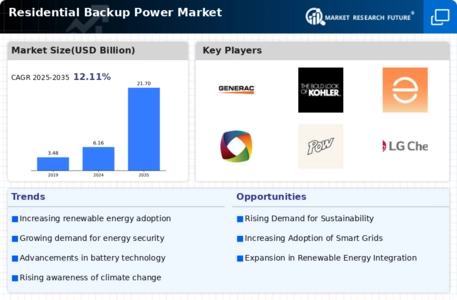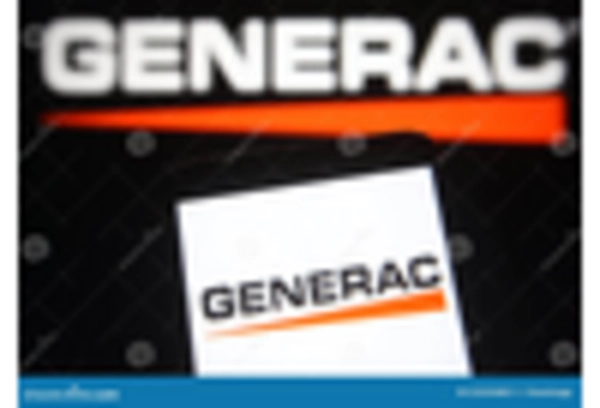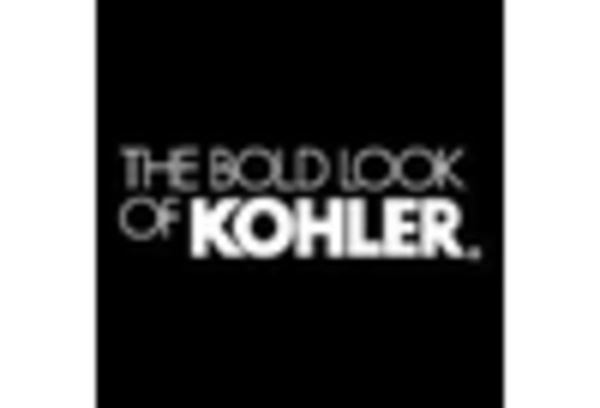Rising Frequency of Power Outages
The increasing frequency of power outages due to extreme weather events and aging infrastructure appears to be a primary driver for the Residential Backup Power Market. According to recent data, regions experiencing severe storms and natural disasters have reported a surge in demand for backup power solutions. This trend indicates that homeowners are increasingly seeking reliable power sources to maintain essential services during outages. The Residential Backup Power Market is likely to benefit from this growing concern, as consumers prioritize energy security and resilience. As a result, manufacturers are innovating to provide more efficient and user-friendly backup systems, which may further stimulate market growth.
Growing Demand for Smart Home Integration
The growing demand for smart home integration is emerging as a significant driver for the Residential Backup Power Market. Homeowners are increasingly seeking solutions that seamlessly integrate with their smart home systems, allowing for enhanced control and monitoring of energy usage. The market data suggests that consumers are more inclined to invest in backup power systems that offer smart technology features, such as remote access and automated management. This trend indicates a shift towards more sophisticated energy solutions that not only provide backup power but also optimize energy consumption. As smart home technology continues to advance, the Residential Backup Power Market is likely to see increased adoption of integrated backup power solutions.
Government Incentives and Support Programs
Government incentives and support programs aimed at promoting renewable energy adoption are likely to bolster the Residential Backup Power Market. Various initiatives, such as tax credits and rebates for energy storage systems, encourage homeowners to invest in backup power solutions. Recent statistics indicate that regions with robust incentive programs have seen a marked increase in the installation of residential backup systems. This regulatory support not only enhances market accessibility but also fosters consumer confidence in investing in backup power technologies. As these programs continue to evolve, the Residential Backup Power Market may experience accelerated growth driven by favorable policy environments.
Increased Awareness of Energy Independence
The growing awareness of energy independence among consumers is driving the Residential Backup Power Market. Homeowners are increasingly recognizing the benefits of having a backup power system that allows them to reduce reliance on the grid. This shift in mindset is influenced by concerns over energy prices and supply stability. Market data indicates that a significant percentage of consumers are willing to invest in backup power solutions to ensure their homes remain operational during grid failures. This trend suggests a potential for sustained growth in the Residential Backup Power Market, as more individuals prioritize self-sufficiency and energy autonomy.
Technological Advancements in Energy Storage
Technological advancements in energy storage systems, particularly batteries, are transforming the Residential Backup Power Market. Innovations such as lithium-ion batteries and solid-state technology have significantly improved energy density and efficiency. This evolution allows homeowners to store excess energy generated from renewable sources, such as solar panels, for later use. The market data suggests that the adoption of these advanced storage solutions is on the rise, with projections indicating a substantial increase in sales over the next few years. As these technologies become more accessible and affordable, the Residential Backup Power Market is poised for expansion, catering to a growing consumer base seeking sustainable energy solutions.


















Leave a Comment